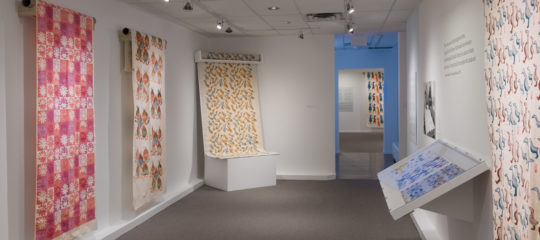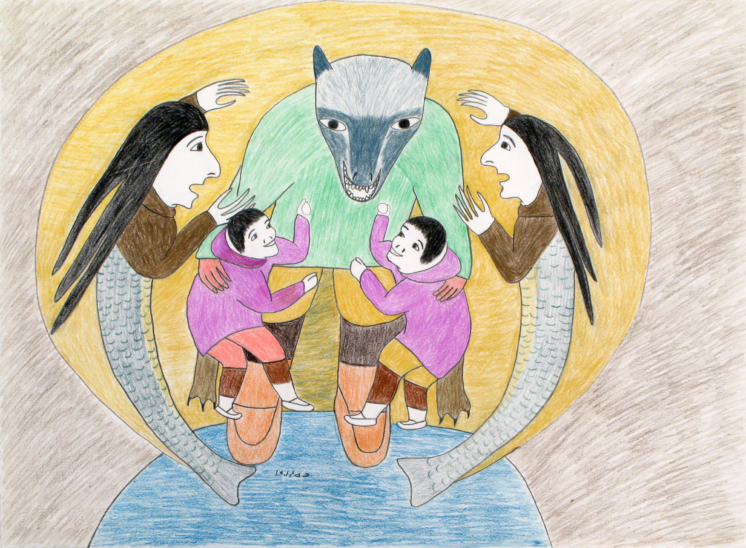Over the course of her career, Victoria Mamnguqsualuk often returned to the same character, Kiviuq (alternatively spelled Qiviuq, Keeveok, or Kivioq, and, in Greenland, Qooqa) in her work. A migrant, Kiviuq travels through different lands as well as through different times and cultures. He is one of the oldest figures in Inuit oral tradition, and his stories likely go back thousands of years. He resurfaces at significant moments—he is known to have intercepted a Soviet satellite flying over the Arctic during the Cold War (during this period, the Canadian Arctic was the front line, and Inuit were first-hand witnesses), and after many lives passed in the world of the white man, he finally returned home to warn of what he had seen while away.
The real and the imaginary rub up against each other in these stories in ways that have often confused their interpretation by outsiders. For Inuit, people and spirits commonly “share the same natural environment.” Victoria’s prints, drawings, and textiles are no exception. We see humans convening with snake spirits (in one print, a person emerges from the body of a hulking yellow serpent); fish are monstrously large; and people are often found in a state of transformation, mutating into seals or birds, while animals in turn become human. Importantly, “all that is described in [these stories] really did happen once, when everything in the world was different to what it is now.” Artists often work in the in-between, in the space of invention. In this in-between, there is room for interplay between the assumed boundaries of human and animal, between real life and story.
Like her sister, Janet Kigusiuq, Victoria worked across different media, creating drawings, prints, and textiles over her lifetime. Her nivinngajuliaat (wall hangings) are often similar in subject to her drawings, where people and animals come together in what feels like a careful choreography. Much like the tension felt between the polar bear and a hunter, it is unclear who will strike first.
Made possible with the generous support of the Power Corporation of Canada, Superframe, and the Women Leading Initiative. Double Vision: Jessie Oonark, Janet Kigusiuq, and Victoria Mamnguqsualuk is on view at the Textile Museum March 8–August 14, 2022.
Audio Didactic:
Bio
Victoria Mamnguqsualuk (Inuit, born in 1930, Garry Lake, Canada; died in 2016, Qamani’tuaq / Baker Lake, Canada) was a renowned artist based in Qamani’tuaq and is one of the best-known artists of her generation. Her work has been included in nearly 100 exhibitions in Canada and internationally and can be found in numerous public collections, including the National Gallery of Canada, Ottawa; the Metropolitan Museum of Art, New York; and the Winnipeg Art Gallery, Manitoba.
Exhibition Site
Textile Museum of Canada

55 Centre Ave
Toronto ON
M5G 2H5

